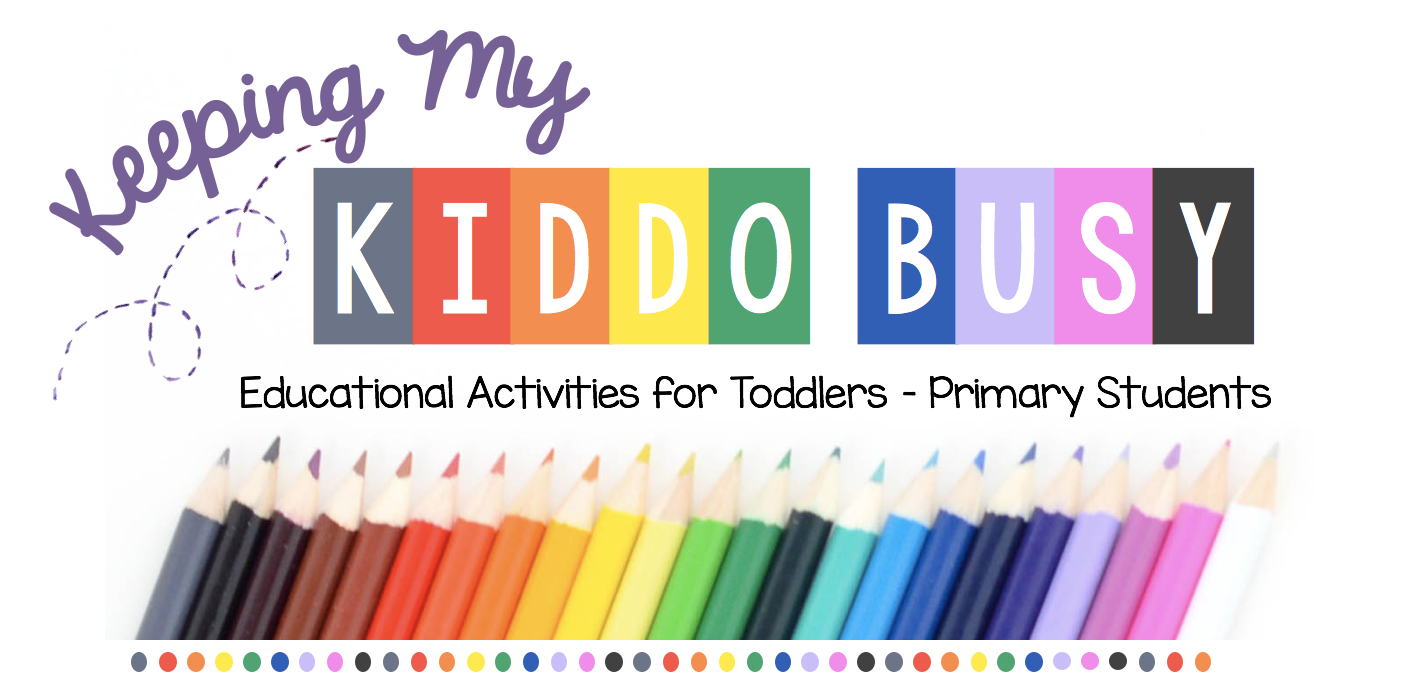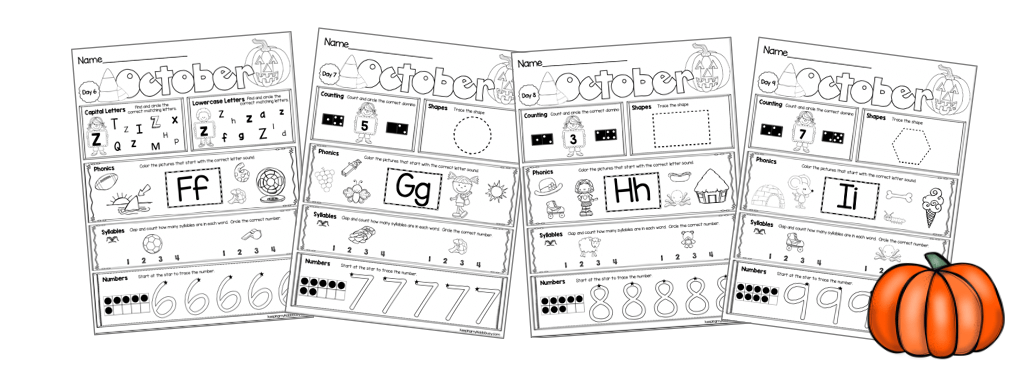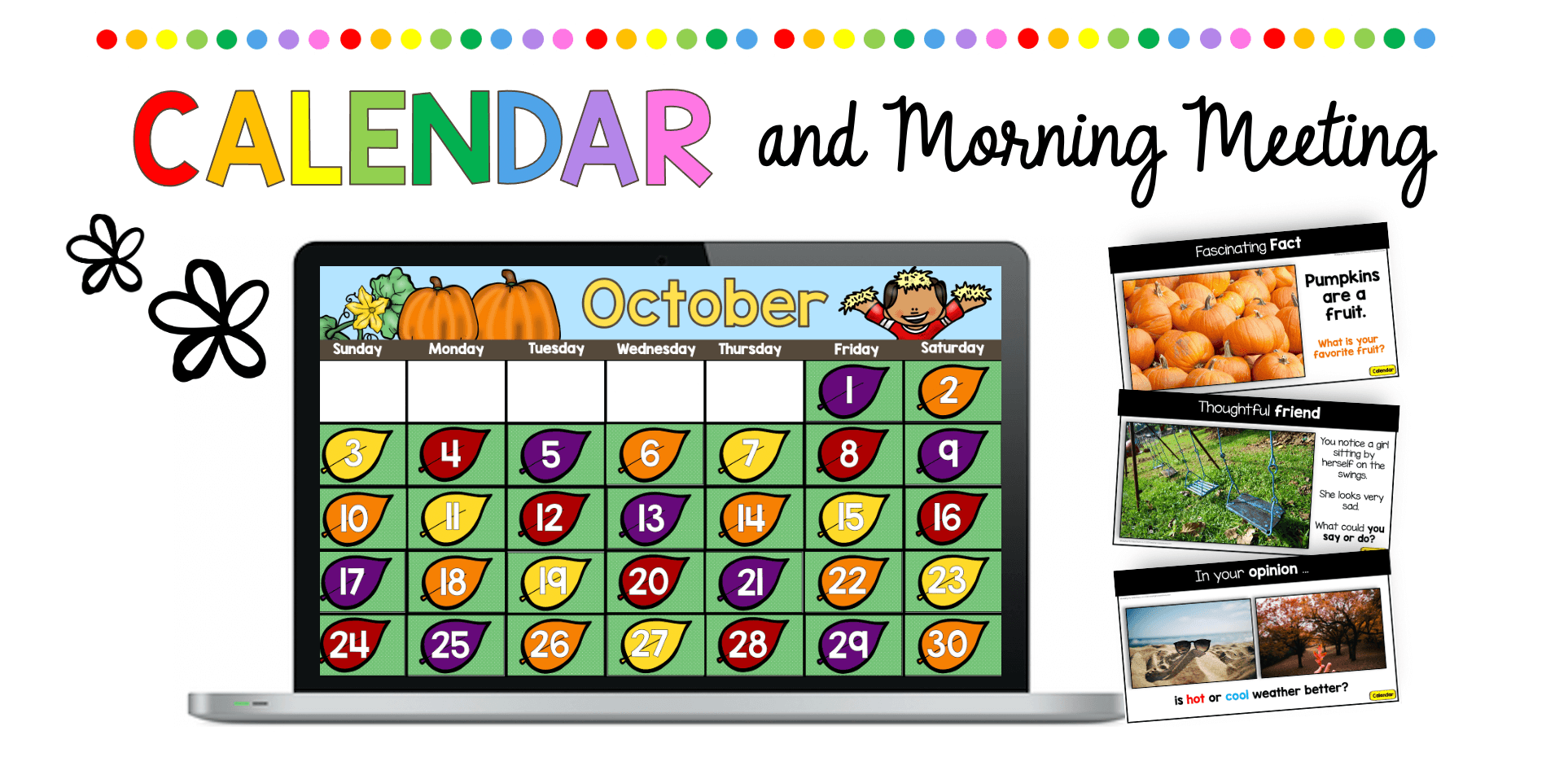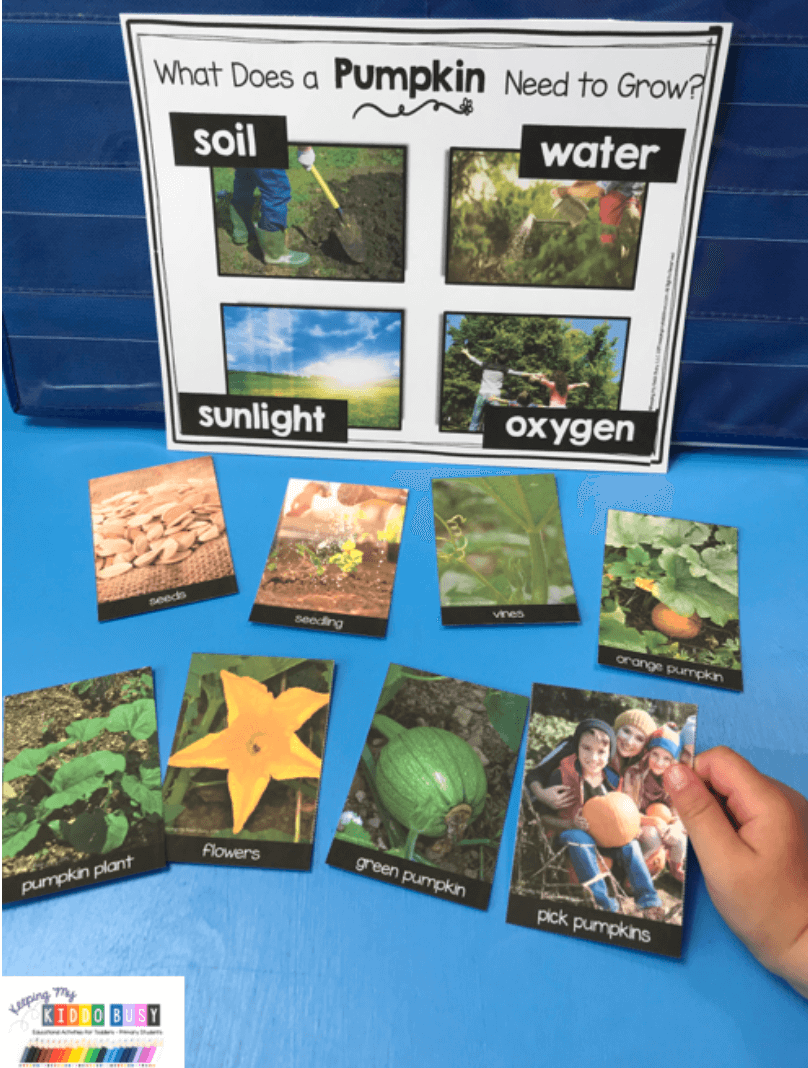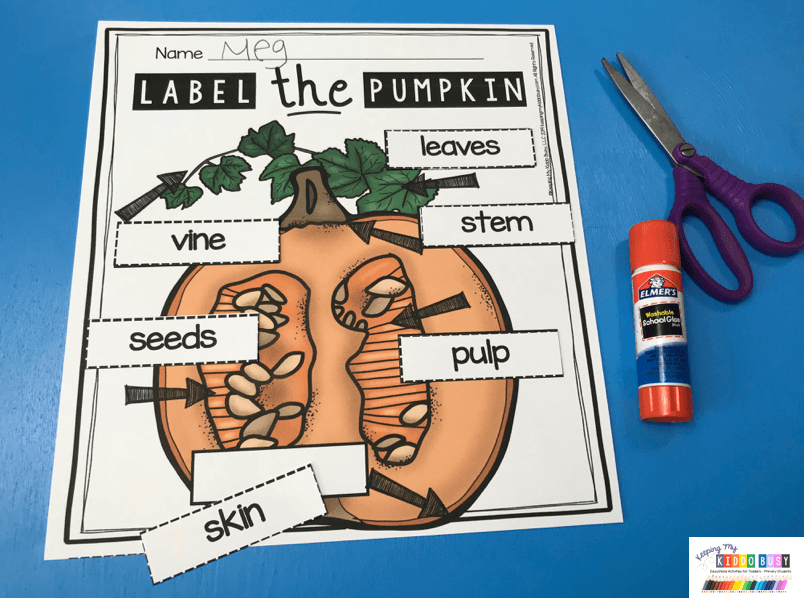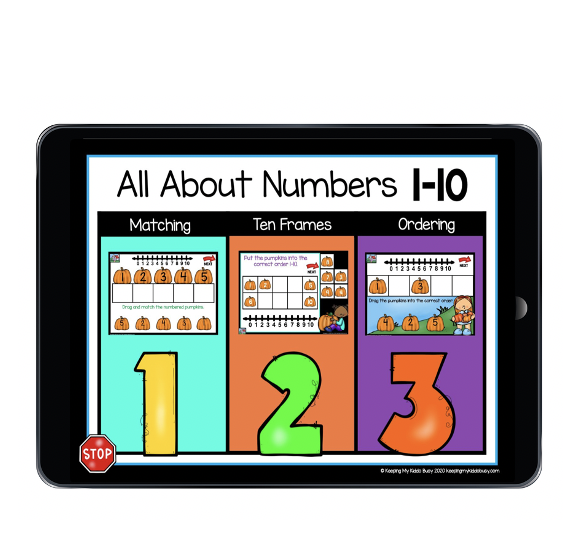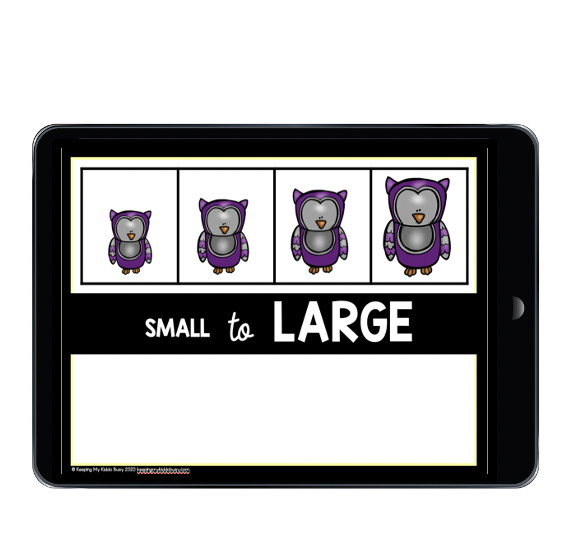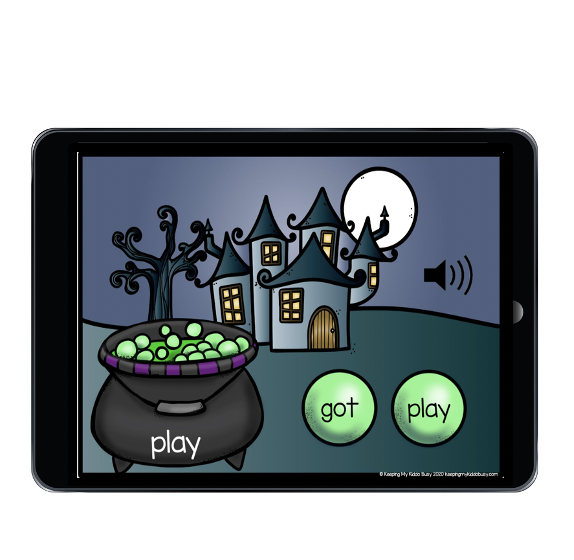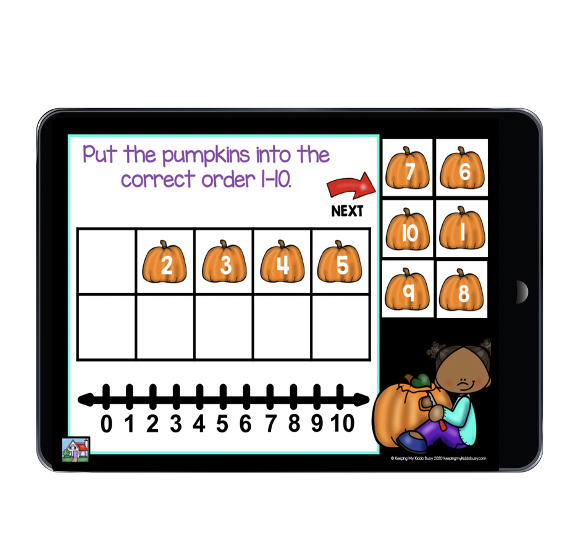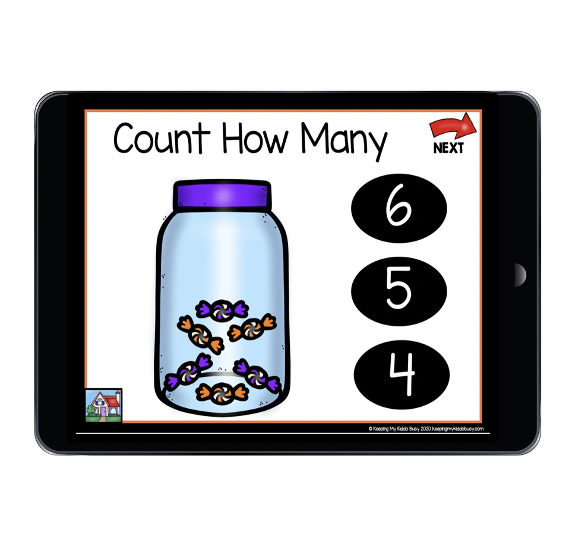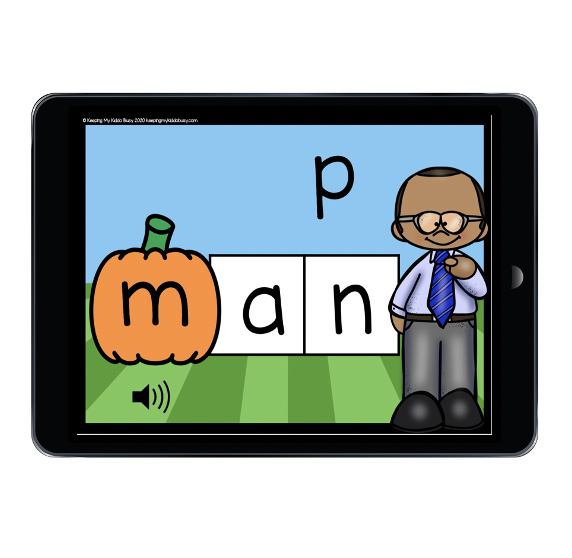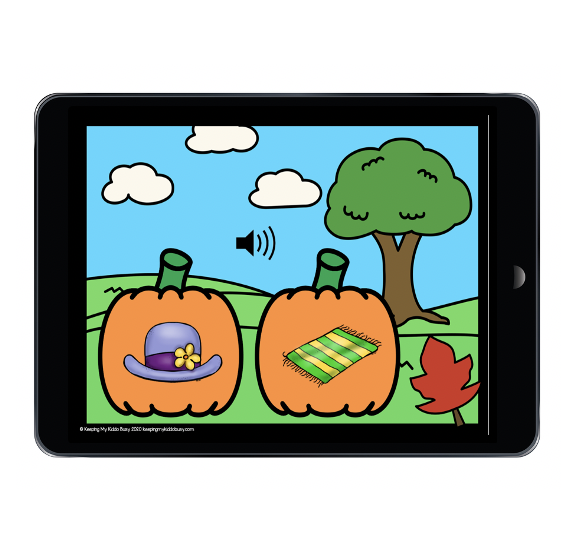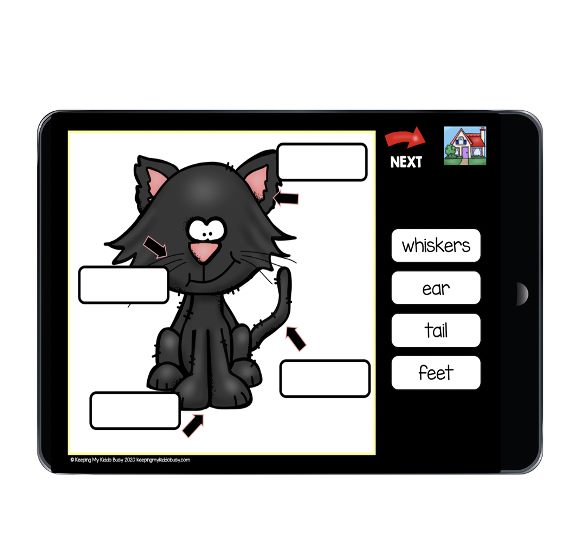October Week 2 - Lesson Round-Up
Welcome to the second week in October!
It really feels like fall now with crisp mornings and warm afternoons.
Have you printed my free October lesson plans yet?
Print them HERE
I walk you through the second week of plans with ideas and tips right here on this blog post.
How are your lessons going?
Whether you’re virtual learning this year, homeschooling or you are in the classroom, by now it hopefully feels like somewhat of a routine.
This page contains affiliate links. Read Full Disclosure
I’ve stressed this before, but children don’t need a strict schedule, but they do thrive on a consistent routine.
They can’t tell time on a clock, but knowing exactly what to do when they walk in the classroom, or how to get started for the day is important.
Before we get started planning this week, CLICK HERE if you missed the first week in October plans.
Also, FIRE SAFETY WEEK falls October 6th-10th this year, so CLICK HERE to see the unit I am using!
SETTING THE TONE FOR YOUR LESSONS AND STATING YOUR OBJECTIVES FOR THE DAY:
If you’re new here, I share free schedule charts and calendar printables on THIS and THIS blog post.
I have found that setting the tone, and actually discussing with children what our goals are for the day is important.
What will be learning about today?
I ask students, “Why do we need to know our letter sounds, or how to count?”
I make sure my kids know what they should be working towards so they understand that it is their job to learn new things each day! I want to be sure they have ownership of their daily goals.
These adorable I Can Statements can be used in the classroom, for virtual learning or homeschooling.
Before we start each subject for the day… I go over our learning objectives.
For math (pink cards) I say,
“Okay boys and girls, today I CAN tell which group has more or less. I CAN write numbers 0-20. I CAN count to 100 by tens and ones. I CAN count objects.”
You can also just focus on one at a time.
Do this at the beginning of your lesson, and then at the end of your lesson come back and review.
I say, “Today we worked on telling which group had more or less. Can you do this now? This is your goal! Let’s say it again. I CAN tell which group has more or less. Whisper to your neighbor how to tell which group has more or less.”
Having them whisper to a neighbor is a great “Think, Pair, Share” activity - so if a child doesn’t know the answer, he has the opportunity to hear the answer from a peer before you go over it.
If you’re homeschooling, have them whisper the answer to you, or even their favorite stuffed animal. This might feel safer to them, and verbalizing the answer helps them so much.
The cards are all color coded by subject, and you can quickly change them out of pocket charts in the classroom or keep them in page protectors if you’re homeschooling.
I used to handwrite these objectives every day, so these cards save me so much time.
They are all in kid friendly definitions and they cover all the standards in kindergarten.
The subject headers are FREE CLICK HERE
MORNINGS IN KINDERGARTEN
How is your morning work going?
This was actually the very first resource I ever made, because I could never find morning work my students could do that was aligned to the standards that they could actually be independent with.
The format stays the exact same, so once students understand how to complete the problems (one or two days of your help) then they are set!
The worksheets get progressively harder each month to target the exact skills they are learning and can be independent with.
Plus, these are google slide compatible now if you’re doing distance learning.
You can print a free week from every single month HERE to see how they work for you.
This digital calendar and morning meeting kit will transform your mornings!
I explain more on last week’s blog post, but if you CLICK HERE you can watch a video and learn more.
PHONICS
We are focusing on sounds /r/ /b/ /f/ /w/ this week.
Small bursts of practice, multiple times a day/week will give you better results with five and six year olds rather than one hour long lesson.
Keep your lessons short and sweet to keep engagement high and behaviors low.
I warm up with phonemic awareness activities.
My kids have onset and rime now, so I continue talking like a robot but now I say three sounds like a robot. For example:
I will say the three sounds /d/ /o/ /g/
My kids will say, “Dog!”
Do a few a few of these and quickly move on.
For first sound matching, you can use picture cards (to see how I do this, visit THIS BLOG POST and scroll to the phonics section) or just do this orally.
I can say, “fox, apple, fan” which two have the SAME first sound?
These warm ups can literally take 3-4 minutes.
All of the resources I create follow a routine.
This saves you so much time explaining directions and expectations, and the children love knowing what to expect.
Every week is set up similar and we learn four new letter names/sounds.
When we are learning new sounds, we start by sorting picture cards.
I have them come up and place it in the correct spot, because it gets them moving.
After doing these two, they have been sitting still long enough, so have them get up and wiggle and sing our favorite phonics song with Jack!
After the quick brain break, one back and do the other two letters.
Here are the activities for the week, and the order I use them in.
The kids have seen these same activities (with different letters) in previous weeks’ lessons, so you don’t have have to explain directions - they just get right to work!
If you haven’t used these yet and are new to my program, HERE is the complete blog post on first sounds and you can print all of the activities show above for free for letters p,m,s,l.
MATH
In math this week, we are tackling more than less than.
This can be really hard for some students, because they must understand numbers conceptually to be able to tell which group has more or less.
We start by telling which group has more, then we move to the harder skills of telling which number is more (greater).
My best tip: Use number lines and ten frames.
Number lines are an incredible tool for helping students understand numbers and how they are related to each other.
When looking at two numbers and trying to decide if they are more or less, you can mark them on these dry erase number lines, and then children can see - the bigger number is always on the right and the smaller number is on the left.
This helps so much with number sense.
Ten frames are excellent for subtilizing - can students quickly see and identify how many objects there are without counting?
This is so important for math and number fluency! Students should be able to look at a ten frame that has five dots filled and instantly know there is five without even counting.
THESE ten frames are great because on one side there is ten and on the back there is 20 for the second half of the year.
They are also dry erase, so I have them write equations and numbers as the year goes on.
When comparing two numbers to see which one is more or less, I put both numbers on the ten frames and then hold them up for students to see. Which number has more boxes filled.. which one has more?
To learn more about more than/less than, visit my counting and cardinality blog post HERE
Teaching reading is all about building confidence, teaching new vocabulary and sight words explicitly and exposing them to familiar resources repeatedly to build their fluency.
This program does all of that!
We use the same three resources every week shown above:
a reading fluency/comprehension page
a sentence builder
a mini reader
The key is that all three resources are tied together with the exact same pictures, sight words and vocabulary, so all week students are building their confidence and fluency.
Personally, I like to use these in my small group literacy time.
Students love the adorable new themes each week, and this week is it candy corn!
To learn more and try a FREE WEEK visit my blog post HERE
ALL ABOUT PUMPKINS
Our theme for the month of October is All About Pumpkins
Each week, we have a new read aloud, and our activities revolve around this read aloud.
I love thematic teaching for so many reasons, and the kids are always so engaged.
We are on week two of our unit, and we have so many fun things planned. This is a great way to incorporate science, social studies, math and language arts together.
Week 2 - The Biggest Pumpkin Ever
Last week our read aloud book was packed full of information about pumpkins and how they grow.
This week we focus on a story that is a narrative about two little mice who both have a big idea for a pumpkin.
They both water it, take good care of it and also make big plans for what they want to do with this pumpkin…. which of course leads to a big problem.
This books lends itself really well to a lot of different class discussions as well as activities.
We start by talking about some of the different things we can do with pumpkins.
We then quickly review the stages a pumpkin goes through, and I show them this anchor chart to remind them that pumpkins need water, soil, water and oxygen (the mice put fertilizer on the pumpkin too.)
Then, students can complete this activity about what a pumpkin needs in order to grow. They trace the words, and then cut/paste them words and pictures to match.
This is a great reminder so students can remember the four major things pumpkins need in order to grow big.
This leads right into writing a sentence! Once we grow a pumpkin, then we can pick it (just like in the story.)
This activity is scaffolded so students can be successful writing a sentence this time of year.
They cut and paste to match the words, then trace it above.
Finally, they color the picture!
If your kiddos are ready, you can then even have them try writing the sentence on their own on the back of their paper.
We have so much fun with pumpkins the rest of the week!
We do pumpkin patterns with daubers and the kids can make pumpkin art with paint. I ask them what they would do with a pumpkin?
And since the story talked about the BIGGEST pumpkin… we practice putting pumpkins in order from smallest too largest.
The color cards can be used in a pocket chart, and then students can cut and paste their coordinating activity.
This is actually trickier than it looks for so many kiddos!
Last, we talk about what is INSIDE the pumpkin this week!
Students cut and paste to label all the parts of the pumpkin! They think this is so neat, and I like to bring a real pumpkin to class to show them.
Then we can make a cute craft. Just print the black line on orange paper, staple together on the top of the stems and use seeds and string for the inside!
This is such a fun week!
To learn more about this unit, and print a FREE pumpkin lifecycle activity, visit the blog post HERE
MATH AND LITERACY CENTERS
Gone are the days where we spend a fortune printing and laminating new monthly centers… only to spend half of the center time explaining directions.
I am all about NO PREP math and literacy centers
Students begin to recognize the format of the activities so I spend zero time prepping and very little time explaining.
I organize so many of my units in soft, three pronged folders.
Then I use page protectors and slip the backlines in them so I can quickly, and easily find the activities I need to copy each week.
If you’re homeschooling, this option is great if you want to use dry erase markers (use fine tip) with some of the activities so you can reuse the activities (some activities are cut and paste, so they can just match in the page protectors if you precut the pieces.)
Have you grabbed the CVC missing sound activity yet?
It is FREE on this blog post. Students fill in the missing letter in each blank pumpkin. This works so well for a quick assessment to see where your kiddos are at.
While we have mostly been working on first sounds, some students will be able to complete this.
It also works well for a small group activity to pull apart the sounds in each word.
Please note: if you are following my October lesson plans, you do not have to do the exact activities I show for no prep centers each week. These are the ones I am doing, but all the skills can be practiced throughout the month.
The worksheets from the pack that are not shown on my plans are used for fast finishers, intervention groups, sub tubs, etc.
This year, I have added monthly boom cards to my no prep centers.
I target the exact skills we are learning in math and language arts.
This month we are working on numbers, counting, ordering smallest to largest, sight words, letter names and sounds, first sounds in CVC words, syllables and labeling.
Many decks include audio - so students can truly be independently learning.
Boom Cards are so fun for whole group lessons, small groups or individual centers.
Parents love them too because it is free to make an account and they can put the Boom App on their phone! This makes distance learning and homeschooling a breeze.
Learn more HERE about how to setup a free Boom Account.
WRITING
Don’t have time for writing in your day?
I totally get it. My admin used to make our schedules (so frustrating… right?!) and never put writing in for kindergarten. When I taught fifth grade, she allowed 15 minutes a day (ahh!)
Well, I figured out how to sneak it in anyway, because reading and writing go hand in hand.
They compliment each other, and they should be taught together.
We start the year learning that words have meaning, and letters need to go in a specific order to make sense. My labeling unit taught my kiddos so much, and now we are on to grouping words that make sense together.
Kids LOVE making lists - lists of their favorite toys, their favorite foods, etc. Five and six year olds want to tell you their opinion and favorites about everything.
You can start the lesson by having them generate words to go in a specific list, and you record them on chart paper. You can model how to form letters, progress left to right as you’re writing, etc.
So much of writing instruction is modeling and getting your ideas down on paper.
This week we are finishing up the cut and paste lists.
We just do one each day, and the kids are earning how to put words on tops of each other to form a “list” and see how all the words a related in a “category”.
These cut and paste lists set them up perfectly for what we will be doing next week.
We are also humming right along with our handwriting.
This week are doing lessons 28-32. We love Magic C! This one trick will help your students SO much.
It is truly magical to watch them progress so quickly. I cannot stress the importance of handwriting and directionality enough.
The kids love when I bring in a magic wand for Magic C lessons… yours will too!
Did you miss my tips and tricks for teaching the first week of October?
CLICK HERE
I hope these teaching tips make your week go smoother!
My goal is to share ideas and tips every week on a blog post for the week coming up. This will hopefully take some stress off of you.
See you next week for the third week in October ❤️
Blessings, Michala
P.S. Want to really plan ahead? CLICK HERE for the fourth week of October and print a fun Halloween game!
CONFERENCES ARE ALMOST HERE!
I love spoiling the teachers in my life!
You can use these printables for your child’s teacher or even your teacher coworkers.
I give them My Favorite Things printable so I know what they love and I can give them intentional goodies throughout the school year!
Use these ideas to make a conference survival kit.
Open the editable file in Adobe 11 Reader (free at adobe.com)
